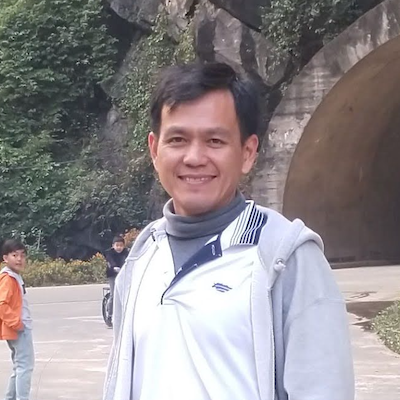- Published on
The CTO’s Dilemma: Balancing Speed, Quality, and Innovation in Product Development
- Authors

- Name
- Hung Nguyen (Alex)
Every CTO (or any Senior Tech Lead) faces a fundamental challenge: how to deliver innovative products quickly while maintaining high quality and scalable architecture. Move too fast, and you risk accumulating technical debt. Focus too much on perfection, and you may lose your competitive edge. The key is finding the right balance.
This article explores the CTO’s dilemma and presents a decision making framework to help me navigate the tradeoffs between speed, quality, and innovation in my consulting works as advisor to CEOs and CTOs in tech/tech-enable companies. We’ll also examine real world strategies used by high growth startups and enterprises to maintain this balance effectively. I hope you find this useful in your own journey as a tech leader.
The Three Forces: Speed, Quality, and Innovation
1. Speed: The Need for Rapid Execution
Speed is essential for first mover advantage, quick iterations, and responding to market changes. However, moving too fast without a solid foundation can lead to:
- Technical debt: Poor code quality leading to future rework.
- Operational bottlenecks: Infrastructure that doesn’t scale.
- Customer churn: Bugs and UX issues frustrating early adopters.
2. Quality: Building for Long Term Stability
Prioritizing quality ensures reliability, security, and scalability. However, focusing solely on quality may slow down innovation and delay product releases. High-quality engineering should:
- Reduce future refactoring costs.
- Improve security and compliance (critical in fintech and regulated industries).
- Enhance user trust and retention.
3. Innovation: Staying Ahead of the Market
Innovation drives differentiation and long term success. It includes integrating AI, LLMs, blockchain, and new business models. However, overly ambitious innovation without execution discipline can result in:
- Overcomplicated architecture.
- Delayed market entry.
- High R&D costs with uncertain ROI.
Framework for Decision Making: The Innovation, Execution Matrix
CTOs can use this Innovation, Execution Matrix to decide where to focus their efforts:
| Execution Speed | Innovation Level Incremental Updates | Strategic Growth | Disruptive Innovation |
|---|---|---|---|
| Fast Execution | Quick iterations, MVP releases | Scaling proven models | High risk, high reward moonshots |
| Balanced Approach | Continuous improvement | Agile scalability | Emerging tech adoption |
| Slow Execution | Maintenance mode | Enterprise grade transformation | Deep R&D investment |
Key Takeaways:
- If the market demands fast action, prioritize execution over complex innovation.
- If differentiation is crucial, invest in innovation but with structured risk management.
- If scaling an existing product, balance quality with speed to avoid unnecessary tech debt.
Real World Applications
Case Study 1: Speed First | Uber's MVP Approach
Uber initially launched with a simple MVP (request ride, pay, rate driver) before expanding to complex logistics, AI driven pricing, and autonomous vehicles. By prioritizing execution over innovation initially, they gained market dominance before refining their tech stack.
Case Study 2: Quality First | Stripe’s Scalable Architecture
Stripe invested heavily in scalable architecture and developer experience early on. While they didn’t rush to market, this quality-first approach positioned them as the backbone of global payments, handling billions in transactions seamlessly.
Case Study 3: Innovation First | OpenAI’s AI Disruption
OpenAI took an innovation-first approach, focusing on AI breakthroughs before commercialization. Their bet on LLMs and reinforcement learning paid off with ChatGPT, but only after years of research investments.
Strategies to Balance Speed, Quality, and Innovation
1. Adopt a Two-Speed Development Model
- Fast Lane: Experimentation, rapid MVPs, customer driven iterations.
- Stable Lane: Core infrastructure, security, and compliance improvements.
2. Use Feature Flags & Modular Architecture
- Deploy new features without impacting the entire system.
- Test innovations in controlled environments before scaling.
3. Implement a Risk-Based Decision Framework
- Critical Systems: Prioritize quality (e.g., payments, security, core APIs).
- Non-Critical Features: Optimize for speed and user feedback.
4. Build an Agile Culture with DevOps & Automation
- Automate testing, deployment, and infrastructure (CI/CD pipelines).
- Invest in AI driven monitoring tools to preempt failures (Datadog, Prometheus, Sentry).
5. Align Product & Engineering on Business Goals
- Define OKRs that balance innovation velocity with stability.
- Use lean experiments to test high risk ideas with minimal disruption.
Conclusion
Balancing speed, quality, and innovation isn’t about choosing one over the other, it’s about orchestrating them effectively. By leveraging frameworks, case studies, and structured risk taking, CTOs can build scalable, future proof products while remaining competitive in fast changing markets.
The next time you face a tradeoff between moving fast, maintaining quality, and pushing innovation, ask:
- Is this decision aligned with our business goals?
- Will it create long term technical debt or a competitive advantage?
- Are we balancing execution speed with future scalability?
The best CTOs aren’t just technologists, they’re strategic leaders who make the right tradeoffs to drive lasting impact.
What’s your biggest challenge as a CTO?